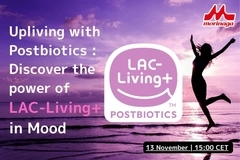Neuroscientists Connect Visual Reactions to Food with Brain Activity
Within 200 milliseconds (ms) after seeing the pictures, subjects’ brains rapidly distinguished between the high- and low-fat foods. EEG results revealed that the regions of the brain typically associated with decision-making and reward assessment responded more strongly to high-fat foods than low-fat foods.

27/01/09 A recent study to be published in Neuroimage on February 1, 2009 revealed that the human brain predicts the energy content of food and even, the fat content, simply by looking at its picture. This is the result of a collaborative project between neuroscientists at the Centre Hospitalier Universitaire Vaudois (CHUV) and University of Lausanne, the Centre d’Imagerie Biomédicale (CIBM), as well as the Nestlé Research Center, in Lausanne, Switzerland.
Healthy adults were asked to discriminate between images of foods and non-foods, while their brain activity was measured using electro-encephalography (EEG) technology. Unknown to the participants, the food images were also subdivided into high-fat and low-fat food categories. Within 200 milliseconds (ms) after seeing the pictures, subjects’ brains rapidly distinguished between the high- and low-fat foods. EEG results revealed that the regions of the brain typically associated with decision-making and reward assessment responded more strongly to high-fat foods than low-fat foods. This suggests that reward properties, such as a food’s energy and fat content, are treated rapidly and in parallel with the brain regions involved in categorization and decision-making.
“The combined expertise of these two unique research institutions presents an exciting opportunity to study the brain mechanisms involved in food choice and perception,” said CHUV neuroscientist Prof. Micah M. Murray, leader of this project. ”This collaboration marks the first time that these processes have been investigated in humans, giving us indications of when and where food-related choices are made in the brain.” Knowledge gained from this study will lead to a better understanding of humans’ decisionmaking processes involving food valuation and choice.
“Interestingly, we discovered that the adult brain can estimate the fat content of food simply from visual information, and that this process happens within 200ms. These results will help us understand how individuals process and interpret the nutritional value of food," said Nestlé Research scientist Dr. Julie Hudry.
Article Reference: Ulrike Toepel, Jean-François Knebel, Julie Hudry, Johannes le Coutre, Micah M. Murray (2009) The brain tracks the energetic value in food images. Neuroimage, 44(3): 967-974.
















